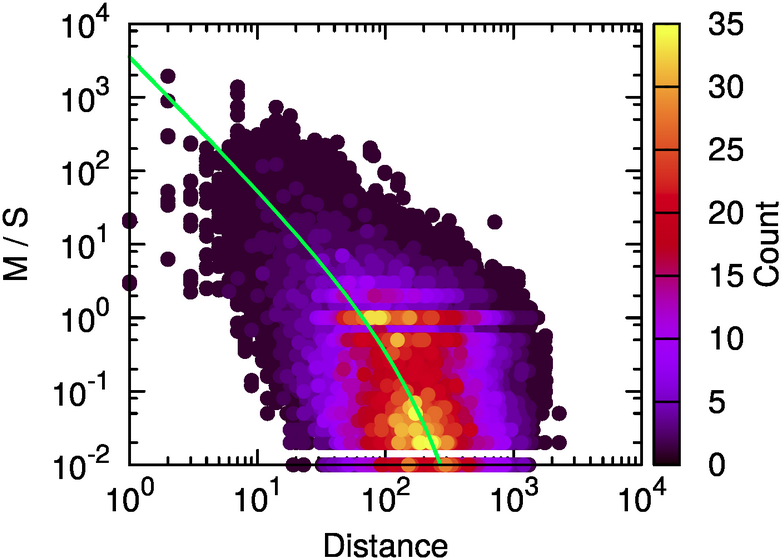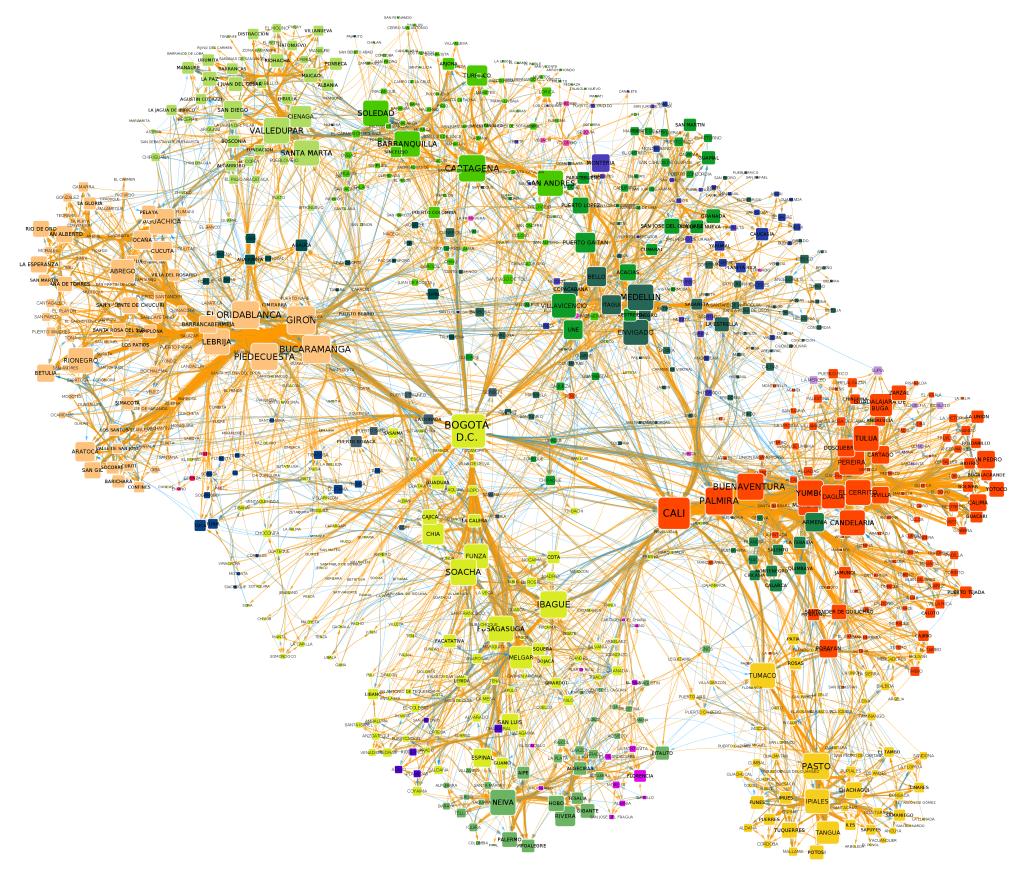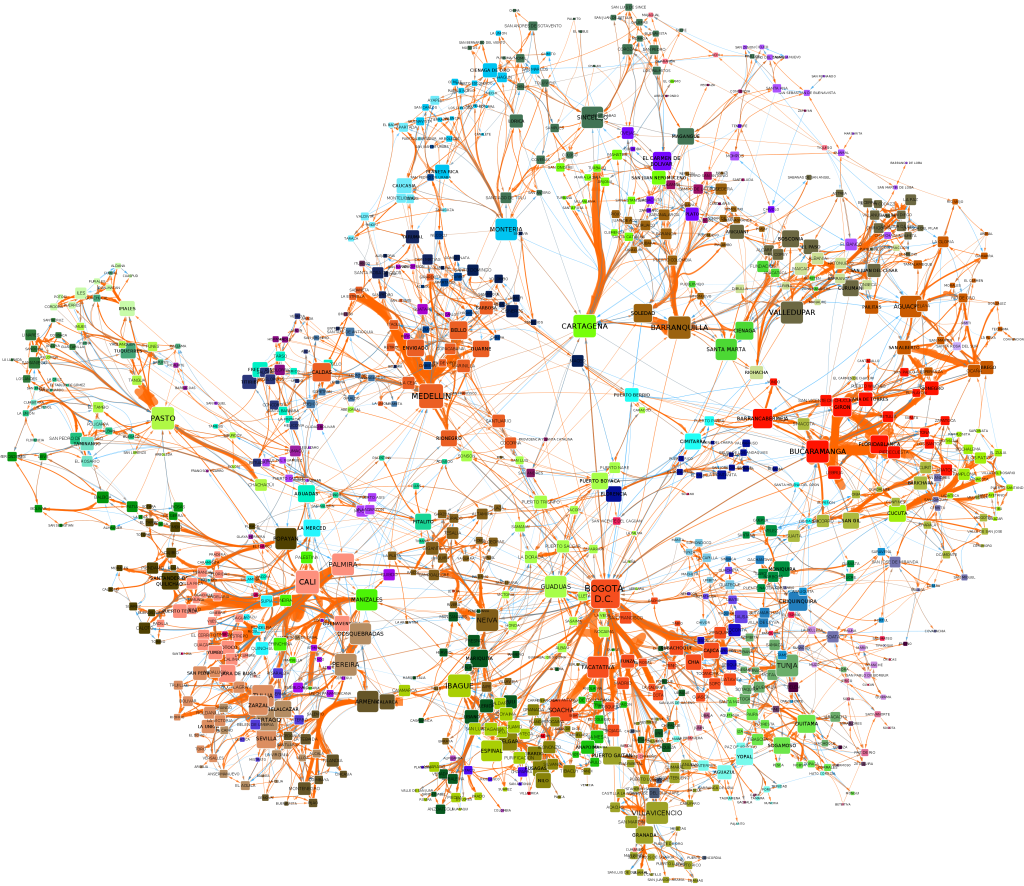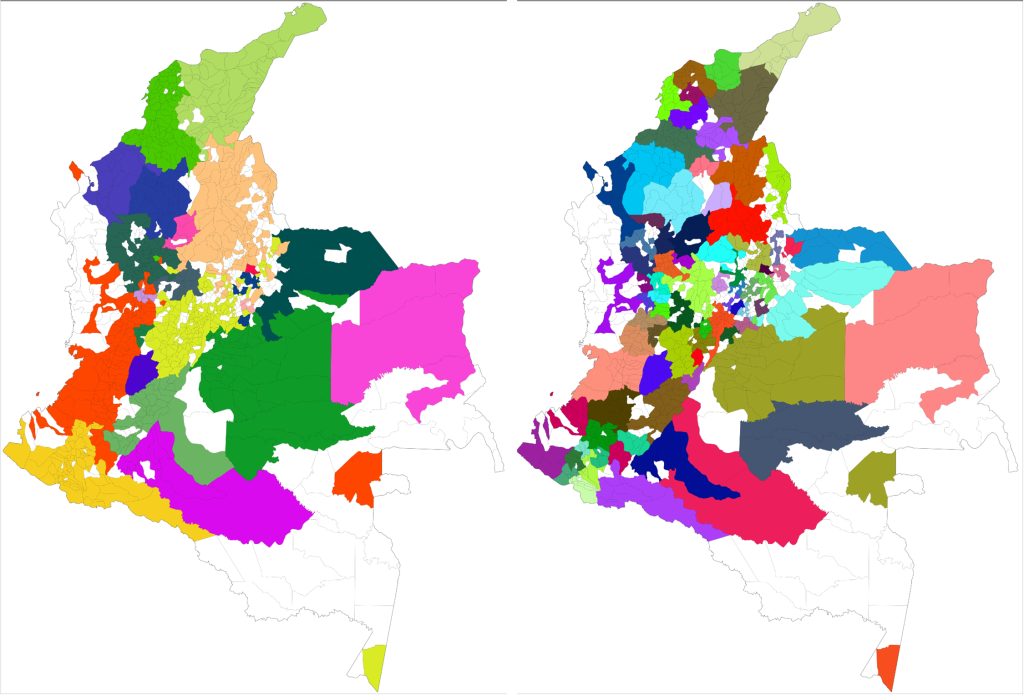The Limited Power of Telecommunication
As a kid from the 80s*, I remember how revolutionary the cellphone era was. It happened so fast. It seemed that, overnight, you could carry in your pocket a device connecting you to everybody you knew, no matter how far. To me, it changed everything. But did it? Yes, over-apprehensive parents can check their babies at the swipe of a finger, and whoever does not carry their cellphone with themselves at all times is labeled as a weirdo — I’m guilty of that. But the telecommunication revolution promised something more: the elimination of distance in communication. Did it deliver? This question was the motivation engine for the paper “Evidence That Calls-Based and Mobility Networks Are Isomorphic” which I wrote with my boss Ricardo Hausmann and which recently appeared in PLoS One.
The question is rather daring, so we decided to take it step by step. The simplest thing we came up was: let’s draw a map of cellphone calls and see if it looks like a geographical map. If it does, we might be onto something. To do so, we obtained data from telecommunication operators in Colombia. They provided us call detail records, where identifiers were encrypted to preserve the anonymity of the people making and receiving the calls. We also aggregated the data to make even the slightest re-identification impossible: every ID was associated to the municipality in which it spent most of its time and so all data was lumped together at the municipality level. At this point, we could draw a map of which municipalities had a significant call traffic with one another. This we called the “Call-based” network:
Before jumping to conclusions with this picture, we built a sister network. Since we just said we knew the location of a phone when making a call, we can keep a record of the different municipalities where we spotted the phone. Again, we joined together all data at the municipality level. This sister network is then a “Mobility” network of Colombia:
It seems there’s something here. The two networks appear to be similar: Bogotá seems to be a prominent center and the connections have a geographical component embedded into them. To make this more evident, we drew the networks on a Colombian map. The color of the municipalities is the same color of the nodes in the pictures above: nodes with the same color are very related in the network — network clusters.
The call-based network is on the left, the mobility is on the right. Blocks of the same color on the left are a clear indication of the call connections being influenced by geography. If there was no relation, the map would look like the Harlequin shirt, with colors scattered evenly across the territory. Mobility clusters are also short-range, although the pattern is harder to see because I had to use many more colors: the clusters are smaller. But the two networks are closely related: in fact, the larger call-based clusters contain the smaller mobility ones, as we show in the paper. We can say that there is a strong relationship between calls and mobility.
This is nice, because it fits with many works in computer science that actually use social relationships to predict human mobility… and vice versa. On the other hand, it is not nice because the existence of these papers also tells us ours is not a new result. Moreover, my starting point was to hint that the call-based and mobility networks are obeying the same laws, not that they are merely correlated. We need to go a step further.
Our step was to consider the difference that distance makes in the two networks. When looking at mobility, the distance between an origin and a destination is an important cost. In the call-based networks, things are a bit trickier. If modern telecommunication really delivered what it promised, distance should be a really low cost, and probably non-linear. To start a social relationship it is not needed to be in the same place at any given time, and even if we move to opposite ends of the world, we can still call each other. As a consequence, there shouldn’t be a way to scale the cost of distance in the call-based network to look like the one in the mobility network.
When we attempted to perform such scaling, we discovered it was actually possible. We checked, at any given distance, the ratio between commuters and callers. If two municipalities are at 50km distance, and there are twice as many commuters than callers, we have a dot on coordinates (50, 2). If we take two municipalities at 100km distance, and the commuters are just a third of the number of callers, the data point is at coordinates (100, .33). Once we consider all data points, we can fit our green line, AKA the scaling function from calls to mobility:

When we used this adjustment to calculate new call-based clusters using the distance cost “as if” it was the mobility network, we obtained the mobility clusters. We detail in the paper the reasons why this is not as circular as it seems. In practice, our green line is a transformation function that morphs the call-based network into the mobility network. If modern telecommunication really killed distance, that green line shouldn’t exist, or at least it should be so wobbly to be practically useless.
There are many ways in which you could interpret this result. One that Ricardo and I like focuses on the relationship between face-to-face and electronic mediated meetings. It’s not like the people you call are the ones you really would rather meet but you cannot. It’s more like you call AND you meet, whenever it is possible. Face-to-face and electronic mediated meetings are not really substitutes in this world, they are more like complements. To come back to my opening, I’d say new technologies didn’t eliminate distance from the communication equation. Alleviate, yes. But ultimately, it’s more like an increased bandwidth than a revolution. At least so far.
* Shut up, I’m still in my twenties. Everybody knows 1996 was only 10 years ago.



